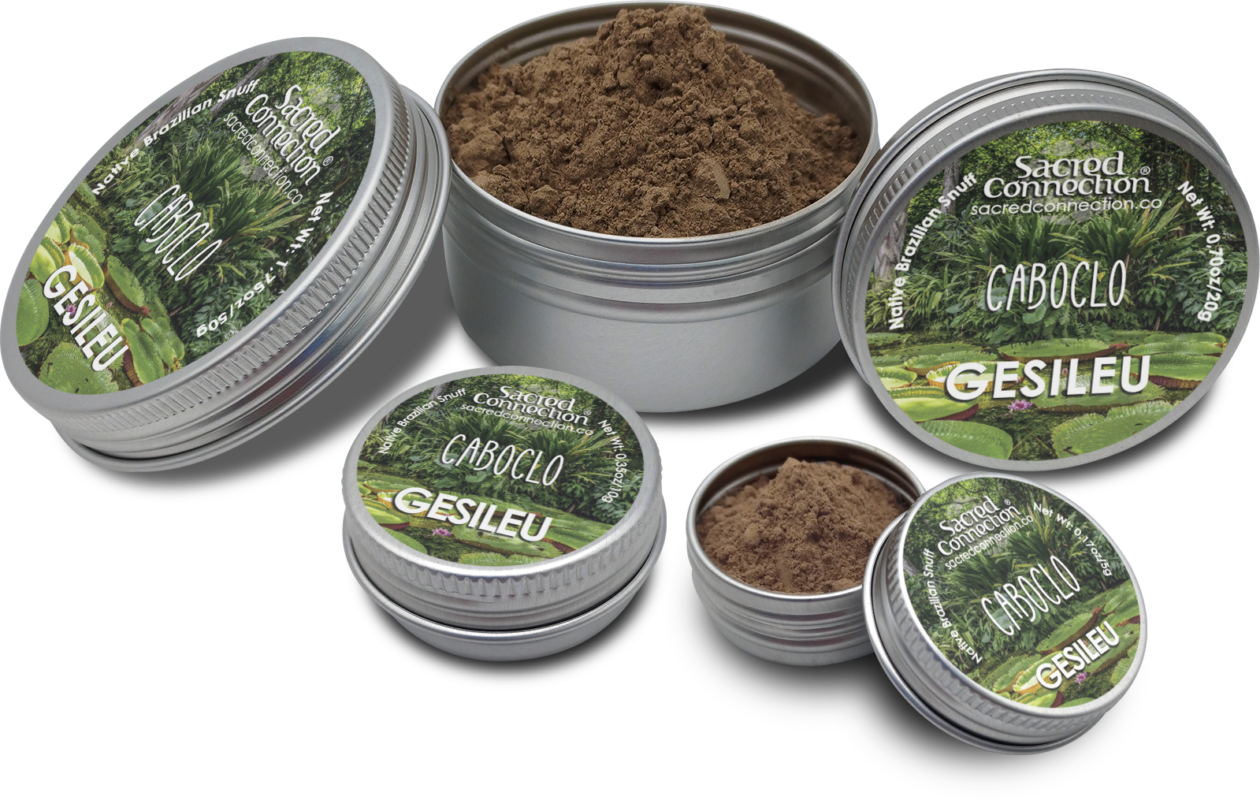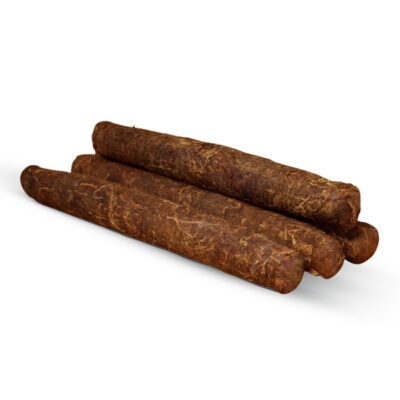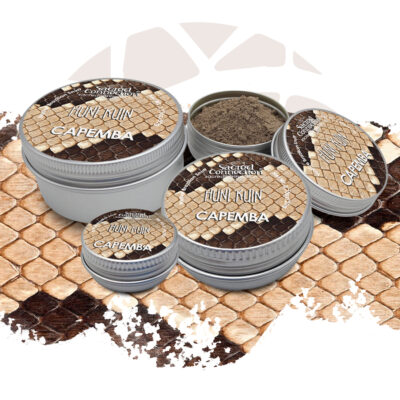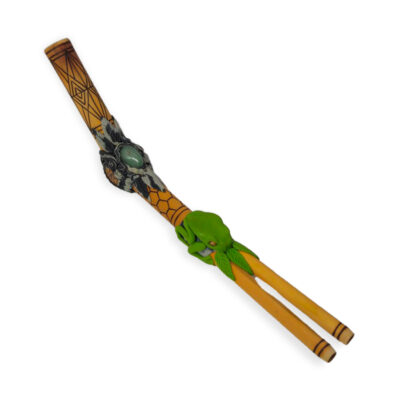De demystificatie van de heilige geneeskunde: een interview met Meester Rapé Maker Gesileu Phasphy Ninawa
Tot op de dag van vandaag zijn misvattingen en vooroordelen over natuurlijke geneeswijzen, vooral die van inheemse volkeren, diep geworteld in onze samenleving. Terwijl sommigen het als minderwaardig en onnauwkeurig beschouwen en beweren dat er geen wetenschap zit achter de overtuigingen en praktijken van deze volken en hun genezende, medicinale procedures en rituelen, banaliseren anderen simpelweg wat heilig is en respect verdient, waarbij ze seculiere kennis en devotionele inspanningen slechts als excuus en pad gebruiken om zich in een compleet andere wereld van hersenloze consumptie van illegale middelen te storten.

In de hoop deze cycli van verkeerde informatie en vooroordelen om te buigen, heeft Amanda Viana tijd gestoken in een bezoek aan Acre, een staat in het noorden van Brazilië, om meer te leren over het erfgoed en de tradities van enkele inheemse gemeenschappen die niet alleen gebruik maken van heilige medicijnen in ceremonies en als onderdeel van hun dagelijks leven, maar ook hun eigen recepten creëren en produceren.
A: Gesileu, wat is uw relatie met rapé? Bent u een 'meester', een pajé van dit medicijn?
G: De term 'meester' of 'sjamaan' is een erg sterke benaming. In feite beschouw ik mezelf niet als een 'meester' van rapé omdat ik nog veel van dit medicijn moet leren. Ik ben een student van rapé, een geleerde van dit medicijn dat zo belangrijk en heilig is voor de inheemse volken van het Amazonewoud van Acre. Tijdens onze studie leren we dat de termen 'meester' of 'sjamaan' titels zijn die we niet aan onszelf geven. Als je iemand hoort zeggen: "Ik ben een meester, ik ben een sjamaan", is dat een eerste waarschuwing om argwanend te zijn. Zo noemen we onszelf niet. Als iemand anders, jij dus, mij 'meester' of 'sjamaan' van rapé noemt, zal ik dat in alle nederigheid accepteren, want jij bent het, iemand anders, die mij op zo'n manier definieert. Maar als je me vraagt of ik een 'meester' of 'sjamaan' van rapé ben, zal ik je zeggen: "Nee, dat ben ik niet".
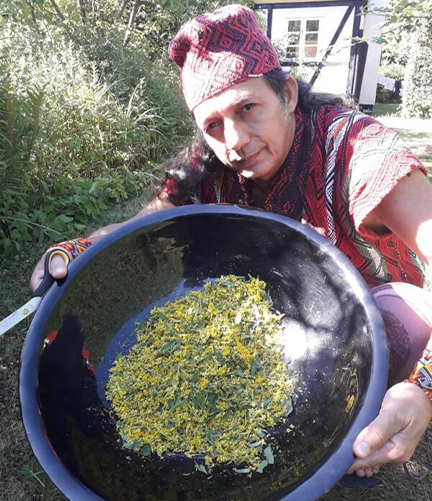
A: Vertel ons iets over je afkomst en je relatie met inheemse volken.
G: Ik ben een caboclo, dat wil zeggen dat mijn voorouders bestaan uit een mengeling van blanke en inheemse mensen. Mijn voorouderlijke lijn bestaat aan mijn moeders kant uit oorspronkelijke mensen uit het Amazonegebied met wat vermenging van blanke mensen, en aan mijn vaders kant uit inheemse mensen afkomstig uit het noordoosten van Brazilië. Mijn moeder heeft inheemse voorouders uit het Amazonegebied, maar door de vermenging met blanken die plaatsvond na de Europese invasie, kan ik je niet precies vertellen van welke etnische groep zij afkomstig is. Mijn vader stamt af van het noordoostelijke Xukurus volk, wiens dorp zich in de buurt van de gemeente Pesqueira in Pernambuco bevindt. Mijn overgrootouders van vaderskant behoorden tot die etnische groep.
Ik ben geboren in Acre, midden in het regenwoud van de Amazone. Omdat mijn ouders rubbertappers waren, had ik van jongs af aan een directe en intense band met het bos. Ik leefde letterlijk ondergedompeld in het bos en wist niet wat een stad, een gemeente of zelfs een dorp was. Pas toen ik zeven jaar oud was, nam mijn vader me voor het eerst mee naar de stad en dat was voor mij een heel bijzondere ervaring. De eerste stad die ik bezocht was de stad Xapuri, die, ondanks dat hij erg klein was, veel indruk op me maakte en een blijvende indruk op me achterliet.
A: Wat was het eerste inheemse dorp dat je ooit hebt bezocht en met welke dorpen heb je nog steeds contact?
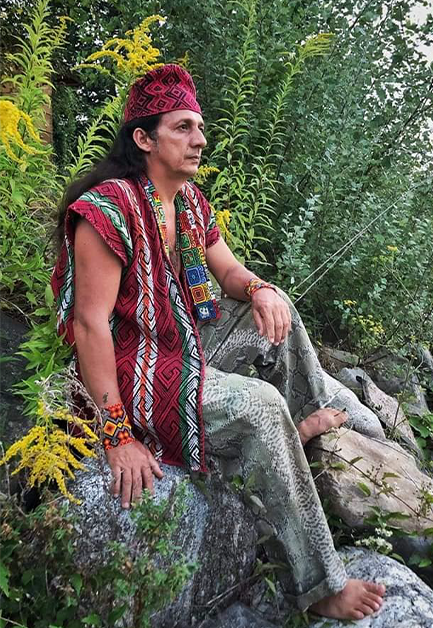
G: Sinds heel vroeg in mijn leven heb ik nauwe contacten met de inheemse gemeenschappen hier in Acre. Juist daardoor kan ik zeggen dat ik bijna alle etnische groepen in deze staat ken, waarvan er ongeveer veertien verschillende officieel erkend zijn. Ik moet zeggen dat ik een nauwere en heel speciale band heb met de inheemse etnische groepen van de Panu taaltak, meer specifiek met de Huni Kuin ('het echte volk'), de Shanenawa ('het blauwe-vogelvolk') en de Yawanawa ('het volk van de wilde zwijnen'). Het was bij de Huni Kuin dat ik mijn rapé-inwijding doormaakte.
Mijn eerste kennismaking met het medicijn kampum (ook wel kambô genoemd)3 vond plaats bij het Shanenawa volk, wiens dorp dicht bij de stad Feijó ligt, dat wil zeggen aan de andere kant van de stad. Na enige tijd had ik een lange relatie met het Yawanawa volk. Bij deze mensen had ik ook de mogelijkheid om mijn studie over het medicijn ayahuasca, dat zij uni noemen, en over de liederen van het bos, die het mogelijk maken om te communiceren met de levende wezens daar, voort te zetten.
Oorspronkelijk gepubliceerd op: https://www.fondationalaindanielou.org/intellectual-dialogue/transcultural-dialogues/transcultural-dialogues-n10-may-2022-spring-equinox-3/
Caboclo Gesileu rapé is perfect voor meditatie en laat je de energie van de natuur voelen, de zintuigen scherpen en de geest kalmeren. Daarnaast is rapé, zoals je al weet, een uitstekende remedie voor mensen met ademhalingsproblemen en zorgt het voor een kalme, rustige en herstellende slaap.
